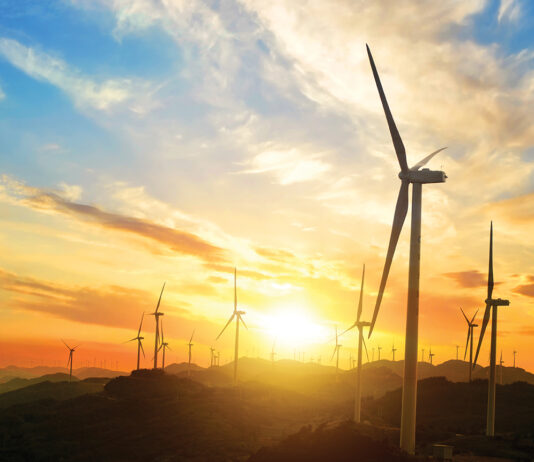
On Thursday, Feb. 10, President Joe Biden promised to “work like the devil” to lower gas prices. However, from day one this administration has ignored the root causes of high oil prices. Instead, they have done everything in their power to limit supply by erecting barriers to new production of oil and natural gas in the United States.
At the American Energy Alliance, we have documented 100 actions the Biden Administration and Congressional Democrats have taken since the inauguration that make it more difficult to produce oil and natural gas in the United States. Some of those actions, like the cancellation of the Keystone pipeline and the temporary ban on all new oil and gas leases on federal lands, have dominated energy headlines over the past year.
However, not enough attention has been paid to the “whole of government approach” this administration has taken to limit new production of oil and natural gas. A subtle example of this approach can be found in the candidates that the Biden Administration has chosen to nominate to key positions within the federal bureaucracy. Positions that most people typically don’t associate with energy and environmental policy.
On Nov. 15, 2021, the Biden Administration nominated Saule Omarova to serve as Comptroller of the Currency. Omarova’s past comments speak for themselves:
“A lot of the smaller players in [the fossil fuel] industry are going to, probably, go bankrupt in short order—at least, we want them to go bankrupt if we want to tackle climate change.”
Another example was the nomination of Sarah Raskin to serve as Vice Chair of the Federal Reserve. Raskin was explicitly nominated because of her belief that the Federal Reserve’s policies should be guided by environmental factors, which is a big departure from the Federal Reserve’s traditional dual mandate to maintain full employment and to keep prices stable. In both of these cases, the nominations were withdrawn as the candidates were deemed too radical as their nominations gained bipartisan opposition. Although these nominations were ultimately unsuccessful, they served an important purpose in that they signaled the eagerness of the administration to expand the scale and scope of regulation so that every arm of government is involved in regulating the industry in the name of climate change.
While the Biden Administration has sought to blame the increase in gas prices solely on the Russian invasion of Ukraine, gasoline prices were already averaging over $3.50 a gallon before the war even started. From December 2020 through March 2022, U.S. monthly average unleaded regular gasoline prices doubled. In response to the invasion of Ukraine, instead of acknowledging the root causes of higher prices, the Biden Administration, and Democrats more generally, have offered up a bevy of non-solutions, as well as policies that would be outright destructive to oil and gas markets.
One thing that’s striking about the administration’s hostile approach to oil and natural gas is that they have not backed off their attack since the invasion of Ukraine. Since the invasion on Feb. 24, many people close to the administration have continued to signal their commitment to hindering the supply of oil and natural gas through their public pronouncements.
On April 15, a few months after banning new permitting on federal lands, the Biden Administration finally announced 144,000 acres of the federal mineral estate opened for oil and gas leasing — just 0.00589 percent of the 2.46 billion acres the American people own. But, even with that small nod that something should be done to increase supply, the White House’s messages remained the same. They choose once again to signal that the administration does not approve of new oil and gas development. White House Press Secretary Jen Psaki said, “Today’s action…was the result of a court injunction that we continue to appeal, and it’s not in line with the president’s policy, which is to ban additional leasing.”
Just a few days later, U.S. Climate Envoy John Kerry said the world’s reliance on natural gas should be limited to a decade. He said, “We have to put the industry on notice: You’ve got six years, eight years, no more than ten years or so, within which you’ve got to come up with a means by which you’re going to capture, and if you’re not capturing, then we have to deploy alternative sources of energy.” Repeated statements like this from administration officials tell investors not to sponsor energy investments in the U.S., since it implies the use of those energy sources will be approved by the government.
In addition to these public statements, since the invasion, the administration has taken several other key actions that haven’t made headlines, all of which will constrain new oil and natural gas development. On March 11, the administration introduced new natural gas infrastructure reviews. This is an interim regulation that will increase the regulatory burden on natural gas facilities by, among other things, requiring climate change impacts be considered when determining whether a project is in the public interest.
Then, on March 21, the SEC announced a proposed rule that would require public companies to disclose greenhouse gas emissions, and their exposure to climate change. This rule would massively increase costs of regulatory compliance. It’s the type of regulation that specifically harms smaller companies that don’t have teams of lawyers and compliance officers ready to handle the regulatory burden.
On April 15, The Interior Department reversed a Trump Administration decision which limited the scope of “compensatory mitigation” the Department could force upon projects on federal land as a condition of receiving a permit. This will hit energy and mining projects especially hard. Under the new guidance, opponents in the federal government could require mitigation located far from the project with little relevance, effectively giving bureaucrats a blank check to request whatever they wish of a permit seeker with little controls.
On April 19, the Biden Administration completed reforms on how agencies implement the National Environmental Policy Act, effectively undoing one of the Trump administration’s most important environmental regulatory rollbacks. This opens the door for officials to cook up whatever justification they desire to impede energy development under the guise of NEPA.
And on April 25, the Biden Administration released a management plan for the National Petroleum Reserve Alaska. The final decision reverses a Trump-era plan that had opened most of the reserve to oil and gas leasing and withdraws some of the most prospective oil and gas areas from consideration.
If the administration’s actions weren’t harmful enough, since the invasion, Democrats in Congress have been cooking up new schemes that would cripple oil and gas markets. Most notably, the House passed HR. 7688. Dubbed the “Consumer Fuel Price Gouging Prevention Act,” it would give the President vast powers to set price controls by executive fiat. Price controls on fuel don’t work, and our experience during the gas lines of the 1970s should remind us that they will lead to shortages.
In polling commissioned for former Vice President Mike Pence’s political nonprofit group, 25 percent of registered voters in four battleground House districts cited “inflation and rising gas prices” as the issues they are most concerned about. Another 12 percent said their top priority was the “economy and jobs.” It’s clear, that despite the rhetoric coming out of the White House, the Biden Administration is not concerned with these issues as they have done everything in their power to limit the development of American oil and natural gas.

Alex Stevens is a Manager of Policy and Communications at the Institute for Energy Research.
















